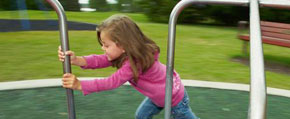We are pleased to announce an exciting new alliance between Active Living Research and GP RED to co-host and coordinate...
Identifying and Measuring Urban Design Qualities Related to Walkability
Presentation at the 2005 Active Living Research Annual Conference
Background
A growing body of research provides evidence of a link between the built environment and active travel. However, to date, the measures used to characterize the built environment have been mostly gross qualities such as neighborhood density and street connectivity. The urban design literature points to subtler perceptual qualities that may influence choices about active travel.
Objectives
This Round I Active Living Research Project seeks to (1) develop a field survey instrument for measuring perceptual qualities of the urban environment, (2) test and refine the instrument, and (3) train lay observers in the use of the instrument. Operational definitions are being developed for nine perceptual qualities of the urban environment: imageability, legibility, visual enclosure, human scale, transparency, linkage, complexity, coherence, and tidiness. To the extent that valid and reliable measures can be developed, this project will provide researchers with new objective measures they can test for relationships to physical activity.
Methods
First, an expert panel was established consisting of 10 leading urban designers, planners, and human ecologists. Next, key perceptual qualities were defined qualitatively based on a review of the urban design literature. These definitions were refined with feedback from the panel. Then, following a standard filming protocol, more than 200 video clips of street scenes were shot in dozens of cities around the United States. From this larger sample, 32 clips were selected following a fractional factorial design, which ensured that all principal combinations of the nine perceptual qualities were represented. These 32 were later supplemented with 16 clips also selected according a fractional factorial design, for a total sample of 48 clips. Next, the clips were shown to the 10 members of the expert panel in two successive visual assessment surveys, following a protocol that had panelists commenting qualitatively on each clip and rating each clip quantitatively with respect to the nine perceptual qualities. Ratings were based on the agreed-upon qualitative definitions. This protocol allows us to conduct both qualitative and quantitative analyses of ratings. Most recently, content analyses have been performed on the clips, in which more than one hundred physical characteristics have been measured for each street scene. These characteristics theoretically relate to the nine perceptual qualities. They have been operationally defined so that tests of inter-rater reliability can be performed.
Results
Our content analysis is currently being completed and final results will be available in August 2004. Other key results will include:
• Assessments of physical characteristics of street scenes for inter-rater reliability; using the joint ratings by two team members as the "gold standard," the three other team members will each rate four clips.
• Modeling of perceptual quality ratings by the expert panel in terms of physical characteristics of respective scenes, as rated by team members. Ratings will be modeled using cross classified random effects models. This cutting edge class of models statistically separates variance associated with scenes from variance associated with viewers and random variance associated with measurement itself.
The following preliminary analyses have been completed:
• Regressing the panel's ratings of overall walking quality on their ratings of all nine perceptual qualities, overall walking quality is significantly related to the nine collectively, and to seven of the nine individually after controlling for the others. Perceptual qualities explain more than three quarters of the variation in overall ratings. All individual qualities are significant at conventional levels except linkage and tidiness. Based on their t-statistics, human scale ranks first in significance as a determinant of overall walking quality, complexity second, and visual enclosure third.
• Calculation of intra-class correlations (ICC) for ratings by the 10 experts shows that most perceptual qualities demonstrate moderate inter-rater reliability (ICC between 0.4 and 0.6); only linkage, coherence, and legibility show fair reliability (ICC between 0.2 and 0.4).
Conclusions
Based on a review of the urban design literature, qualitative comments by the expert panel, and preliminary quantitative analyses, we anticipate that it will be possible to operationally define at least three perceptual urban design qualities that (1) relate to individual streetscapes without regard to surroundings, (2) are well defined qualitatively, and (3) were consistently rated by our expert panel. The qualities that meet these criteria are visual enclosure, transparency, and complexity. These qualities have already been partially operationalized in one or more studies uncovered in our literature review. Other qualities will be much more difficult to operationally define because they fail to meet one or more of the three preceding tests. The most problematic qualities appear to be legibility and linkage, while the remaining qualities-imageability, human scale, coherence, and tidiness-appear to have some potential for operationalization.
- DOWNLOAD "Ewing_0.pdf" PDF (1.43 MB) Presentations
Related Tools & Resources
STAY UP TO DATE
RECENTLY ADDED TOOLS & RESOURCES
MOVE! A BLOG ABOUT ACTIVE LIVING
The "Active Living Conference" aims to break down research and practice silos and...







